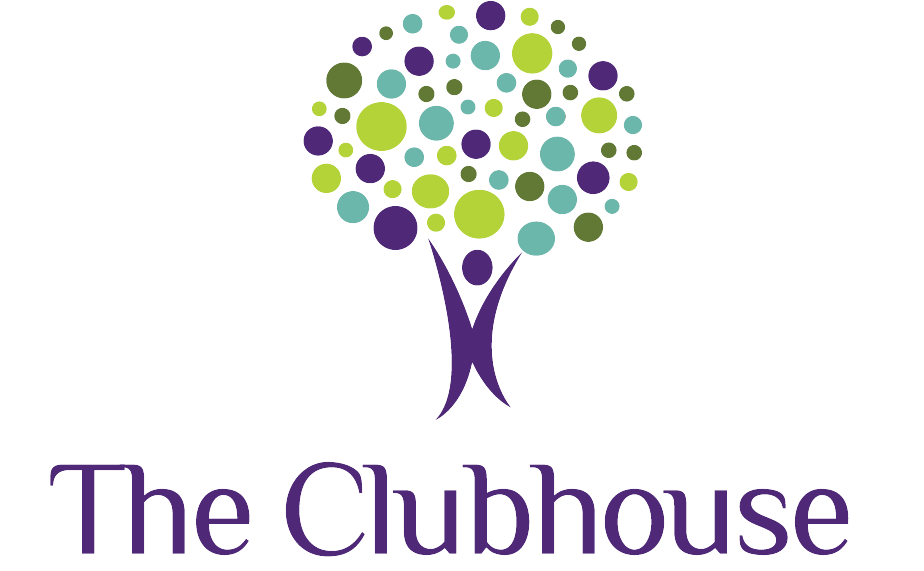What does ABA therapy involve? Applied Behavior Analysis, ABA, is a therapy focused on how kids learn and behave. By using regular interventions, ABA helps children with autism spectrum disorder build important skills like communication, social interaction, and self-control.
The benefits of ABA therapy can be life-changing. It helps children with autism reach their potential by breaking learning into smaller steps and encouraging positive behaviors. This approach helps kids become more independent and confident.
At The Clubhouse, we provide personalized and caring ABA therapy tailored to each child’s needs. Our team of board-certified ABA therapists is committed to creating an inclusive and supportive environment where every child can shine.
Learn More About Our Transformative ABA Therapy Services Today!
Individualized Treatment Plans
ABA therapy recognizes that every child is unique, so it focuses on personalized treatment plans. A Board-Certified Behavior Analyst (BCBA) is key to this approach, starting with an in-depth assessment of the child’s skills, challenges, preferences, and family background.
This sets the stage for a custom intervention plan tailored to the child’s specific needs. By considering each child’s environment and strengths, ABA therapy ensures support is both effective and meaningful to their everyday life.
Personalized ABA therapy goes beyond just customization. Research shows that these tailored ABA interventions for kids with autism significantly improve outcomes by matching each child’s learning style and development pace.
Core Techniques and Strategies
ABA therapy employs several ABA techniques to enhance positive behaviors and reduce negative behaviors. The most common strategies:
Positive Reinforcement: Encouraging Growth and Progress
Positive reinforcement, a major part of ABA therapy, helps kids by rewarding good behavior and making them do it more often. It’s heartwarming seeing your child who has trouble speaking but starts using words more with encouragement and rewards like praise or a favorite toy.
A 2020 study shows that positive reinforcement boosts learning and motivation in kids with autism. It helps them connect learning with fun, making them more interested in doing things that seemed tough before.
This technique not only benefits the child but also their family. As parents, we love seeing our children grow with steady and supportive reinforcement. It’s about celebrating every little win, knowing each one brings the child closer to being more independent and confident.
Your child and ABA therapist build a strong bond as trust grows, setting the stage for long-term progress.
Task Analysis: Building Skills Step by Step
Task analysis breaks down complex skills into smaller, easier steps, making it simpler for kids with autism to learn. This approach ensures that big tasks don’t seem too hard but are tackled one step at a time. Task analysis helps teach daily living skills and boosts a child’s confidence in trying new things. By focusing on small wins, kids can learn at their own pace, lowering anxiety and building a sense of accomplishment.
Prompting: Encouraging Early Learning
Prompting involves giving hints to help kids learn new skills. It’s important when they’re just starting with new behaviors. Research in the Association for Behavior Analysis International journal shows that prompting can help with learning new behaviors, so kids can reach their potential faster. These hints can be physical, visual, or verbal, and are customized to fit each child’s learning style, making sure they get the right support.
For families, prompting brings big emotional benefits. It reassures parents that their child isn’t alone in this journey, and expert help is always there. As kids reach goals with guidance, families celebrate, knowing it means more independence ahead. It creates an environment where both kids and parents see that learning can be supported and fun.
Prompt Fading: Building Independence
Prompt fading is all about gradually taking away the hints so kids can do things on their own. As kids get more confident, the help is dialed down until they can handle tasks without assistance.
This step is key for building self-reliance and resilience. In the same study provided above, the research fully divided into how prompt fading helps kids keep up learned behaviors over time and in various situations.
Shaping: Guiding Towards Desired Behaviors
Shaping means rewarding small steps toward a desired behavior, gradually leading the child to the end goal. It’s perfect for teaching complicated behaviors that can’t be learned all at once. Research highlights shaping as a great way to teach complex behaviors to kids with autism, giving them the tools to tackle challenges confidently.
Emotionally, shaping gives families hope and perseverance. Watching their child make progress step by step toward challenging goals boosts belief in their potential. It’s about recognizing each effort and appreciating the journey, knowing every try brings the child closer to success.
Shaping strengthens family unity as they support and celebrate their child’s growth, showing the importance of encouragement and patience in achieving great results.
Skill Development
ABA therapy focuses on improving various functional skills, including:
Communication and Language: Building Connections
ABA therapy helps kids improve their communication and language skills, giving them the tools to express themselves and connect with others. Using strategies like modeling and natural environment training, therapists teach kids new words and phrases, enhancing both verbal and non-verbal communication.
Research shows that structured interventions like ABA therapy can greatly improve speech and communication in children with autism. For families, seeing their child start to communicate is not only heartwarming but also empowering, highlighting their child’s potential to connect with the world.
ABA therapy also encourages alternative communication methods, like sign language or Augmentative and Alternative Communication tools for kids who find traditional speaking challenging.
This approach ensures every child has a way to express themselves. As parents see their child learn to share thoughts and feelings, it brings a sense of achievement and hope for deeper relationships in the future.
Social Skills: Making Friends and Building Bonds
ABA therapy focuses on developing social skills, which are key to helping kids with autism feel included and accepted in various social settings. This training often includes role-playing, interacting with peers, and group activities such as a fun musical playdate to teach concepts like taking turns, sharing, and reading social cues.
These skills help children engage in public and community activities more confidently. As kids form relationships and interact more with peers, parents take comfort in knowing their child can be part of a connected world, bringing joy, pride, and a sense of normalcy to family life.
Self-Care and Daily Living Skills: Building Independence
Teaching kids with autism self-care skills is key to helping them become independent, and ABA therapy is a big help here. By breaking down tasks, kids learn how to dress, brush their teeth, and use the restroom. These skills help kids participate more in school and community activities, reducing caregiver strain and creating a supportive environment for everyone to thrive.
Play and Leisure Skills: Embracing Fun and Creativity
Play is important for kids’ emotional and social growth, and ABA therapy helps develop these skills. Through structured play and activities such as imaginary play, kids learn to play alone and with others, boosting their creativity, imagination, and teamwork.
Research shows kids with autism improve in play diversity and social integration after targeted play interventions.
These fun activities not only bring happiness but also help kids develop problem-solving skills and emotional intelligence, enriching family life with shared laughter and learning.
Motor Skills: Moving Towards Mastery
ABA therapy is also crucial in developing motor skills for kids with autism, tackling both fine and gross motor challenges. Therapists use techniques like modeling and guidance to teach movements like grasping, stacking, jumping, and balance. Consistent ABA interventions coupled with occupational therapy can lead to better coordination and physical abilities.
For example, at The Clubhouse, our team takes a multidisciplinary approach to help kids develop motor skills, using music, art, and play to make learning fun. As parents witness their child’s progress in reaching developmental milestones, they feel empowered and motivated to support their child’s growth even further.
Check Our Transformative ABA Therapy Services Today!
Structured Learning Sessions

An ABA therapy session is typically structured and highly individualized, focusing on specific goals tailored to each child’s unique needs.
Discrete Trial Training (DTT): Teaching Skills Step by Step
Discrete Trial Training (DTT) is a structured way of teaching used in ABA therapy. Think of it as breaking down a big task into smaller, manageable steps. Each step is practiced through repeated trials, helping kids with autism learn skills ranging from simple actions like pointing to more complex ones like solving puzzles.
Parents often witness amazing changes and feel proud as their child conquers previously tough tasks. Every lesson is a step forward, offering hope and reinforcing the belief in their child’s limitless potential. With patience, DTT creates a clear path to mastering skills, giving families confidence in their child’s progress toward a brighter future.
Naturalistic Teaching Strategies: Learning Through Everyday Activities
Naturalistic teaching strategies focus on teaching skills in a child’s everyday environment, making learning feel natural and spontaneous. Kids might pick up language skills while playing or develop social skills during dinner with the family. These approaches fit well with daily routines, increasing kids’ engagement and helping them retain what they’ve learned.
Verbal Behavior Intervention: Building Functional Communication
Verbal Behavior Intervention (VBI) focuses on improving communication skills, and teaching kids how to express their needs, wants, and feelings. By understanding the reasons behind communication, kids gain the skills needed to interact effectively.
For families, hearing their child express thoughts and emotions is incredibly touching, fostering deeper bonds and understanding. Conversations that used to be frustrating turn into meaningful exchanges, bringing harmony and empowerment.
Data Collection and Analysis
ABA therapists carefully track the behaviors and progress of each child. This helps them understand the child’s behavior better and use research-backed methods to spot important patterns.
By relying on data, therapists can navigate therapy effectively, maximizing each child’s development.
With detailed information, ABA therapists can objectively analyze what’s working and what needs changing, allowing the therapy plan to evolve with the child. This approach is accurate and responsive.
If a technique isn’t effective, the data guides therapists to try other methods, inspiring optimism and progress.
Family Involvement
Training parents and caregivers to help practice skills outside of therapy is a key part of ABA therapy, helping connect structured sessions to everyday life.
This training gives families useful techniques, making them essential members of their child’s development team. Studies show that when caregivers help reinforce skills, kids are more likely to keep and use those skills.
Families learn hands-on strategies tailored to their child’s needs, creating a partnership between therapists and families that strengthens the therapy journey.
Empowering families to take an active role motivates them to continue their child’s progress at home. This team effort creates a supportive environment for the child’s development, helping them thrive both inside and outside therapy sessions.
Learn More About Our Transformative ABA Therapy Services Today!
Verdict: What Does ABA Therapy Involve?
ABA therapy is a journey of hope and transformation for children with autism and their families. Fostering essential skills through structured and natural learning strategies opens doors to new possibilities and creates a brighter future. Seeing your child grow, communicate, and interact with the world is a deeply moving experience, one that changes lives and strengthens family bonds.
At The Clubhouse, we’re committed to walking this path with you. Our dedicated ABA therapists are here to support your child’s unique journey every step of the way. Discover how we can make a difference in your child’s life.

